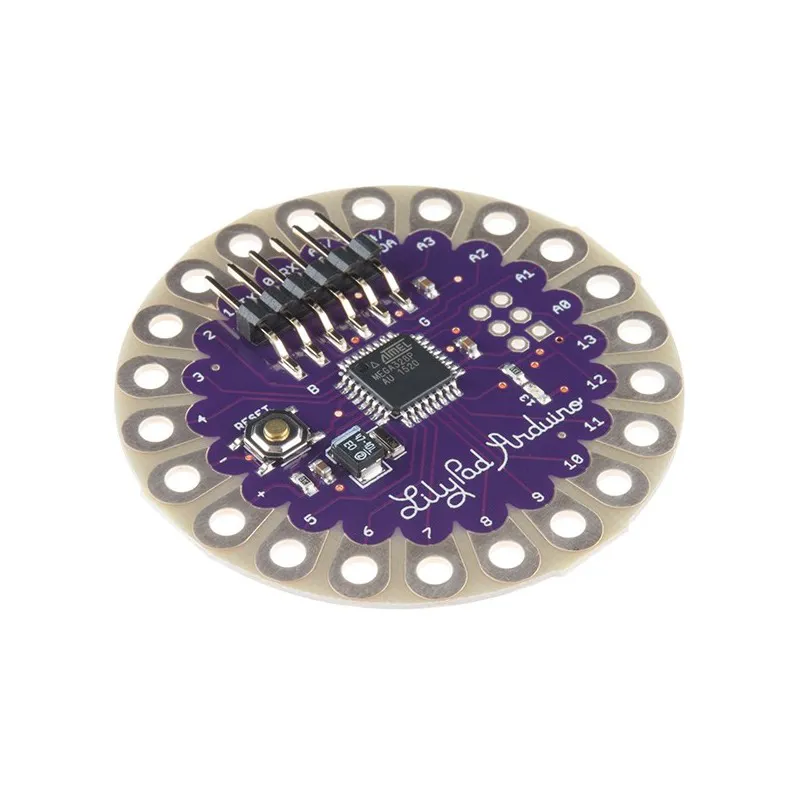
Out of Stock
Lilypad Atmega328P Development Board
27.66RON
- Stock: Out of Stock
- Model: M001.LILY328
Your orders placed until 16:30 on weekdays are shipped on the same day.
Tags:
Microcontroller
, Embedded Systems
, Arduino
, Development Board
, Atmega328p
, Prototyping
, Electronics
, DIY Projects
,
Lilypad Atmega328P Development Board
The Lilypad Atmega328P Development Board is a uniquely designed microcontroller board, specifically tailored for e-textiles and wearable electronics projects. It is equipped with the Atmega328P microcontroller, a chip also utilized in the widely recognized Arduino Uno board. Unlike conventional development boards, the Lilypad is engineered to be seamlessly integrated into fabric and wearable projects by sewing.
Key Features:
- Atmega328P Microcontroller: The microcontroller is the powerhouse of your wearable projects. It has the ability to execute Arduino sketches and interact with a variety of sensors and actuators.
- Design for Wearables: The Lilypad board boasts a circular design with sewable tabs around its edge, facilitating easy attachment to fabric. This innovative design empowers you to develop wearable electronics like sensor-embedded clothing, LED-lit attire, and more.
- Compact Dimension: The board's small size and light weight make it the perfect fit for projects where space and weight are crucial factors, such as in wearable technology and e-textiles.
- Compatibility with Arduino: The Lilypad Atmega328P Development Board is compatible with the Arduino Integrated Development Environment (IDE), which allows you to script and upload Arduino sketches for programming the board.
- Incorporated Components: Depending on the specific model or variant, the board may come with built-in components like LEDs, switches, and sensors.
In conclusion, the Lilypad Atmega328P Development Board is a top-notch choice for makers, hobbyists, and designers who are passionate about developing wearable electronics projects, interactive textiles, and other cutting-edge applications where traditional rigid circuit boards are not suitable.














